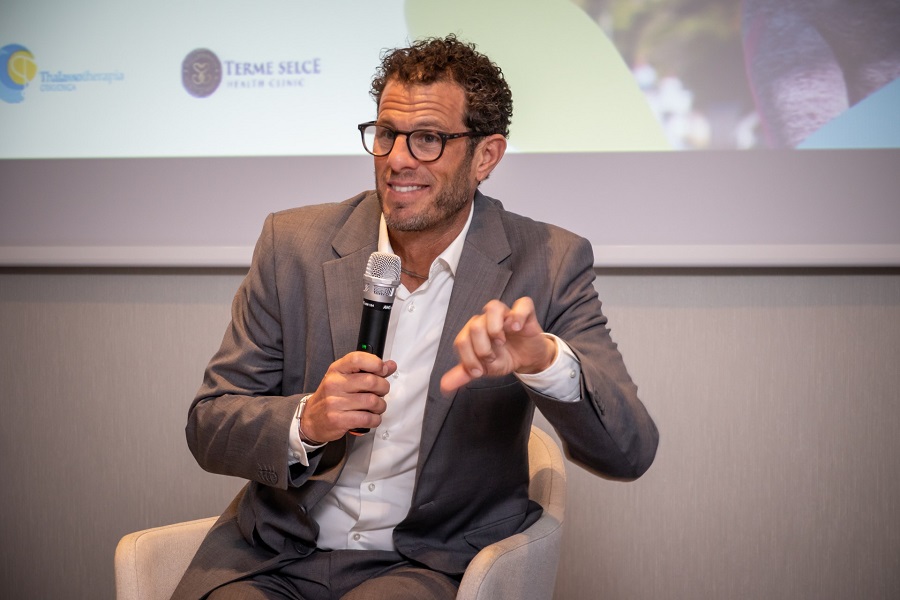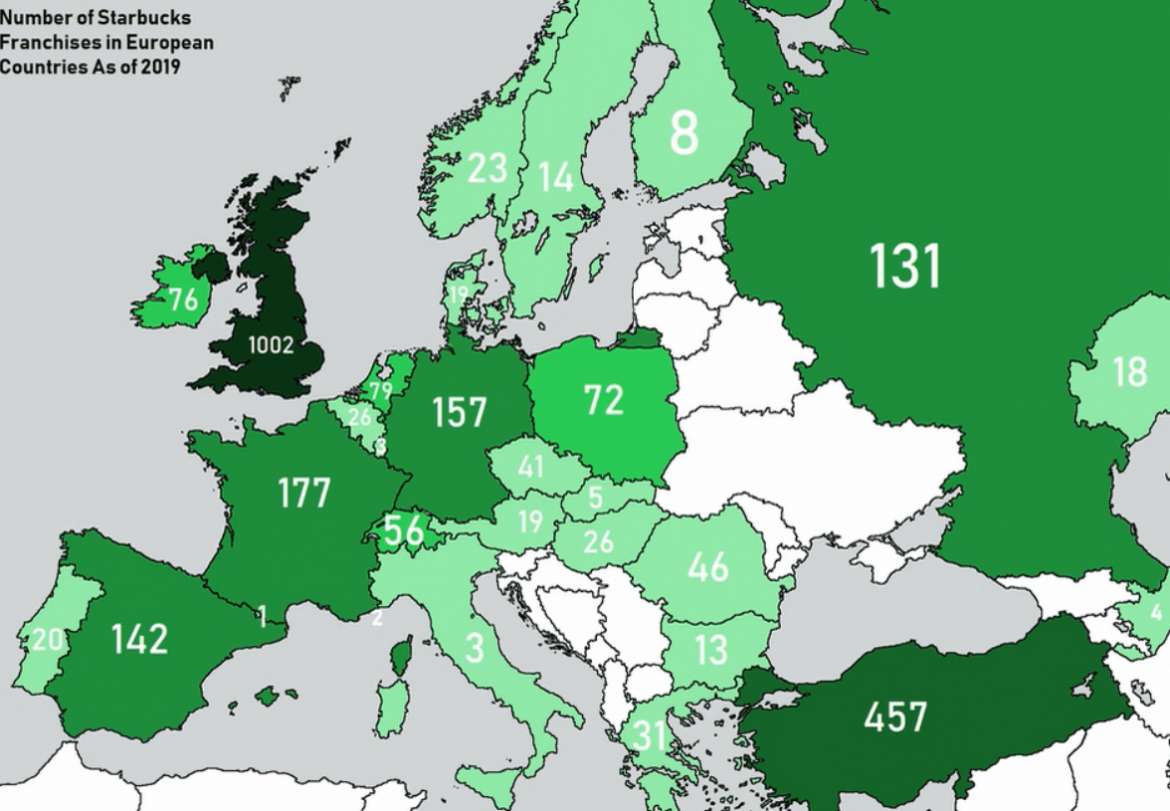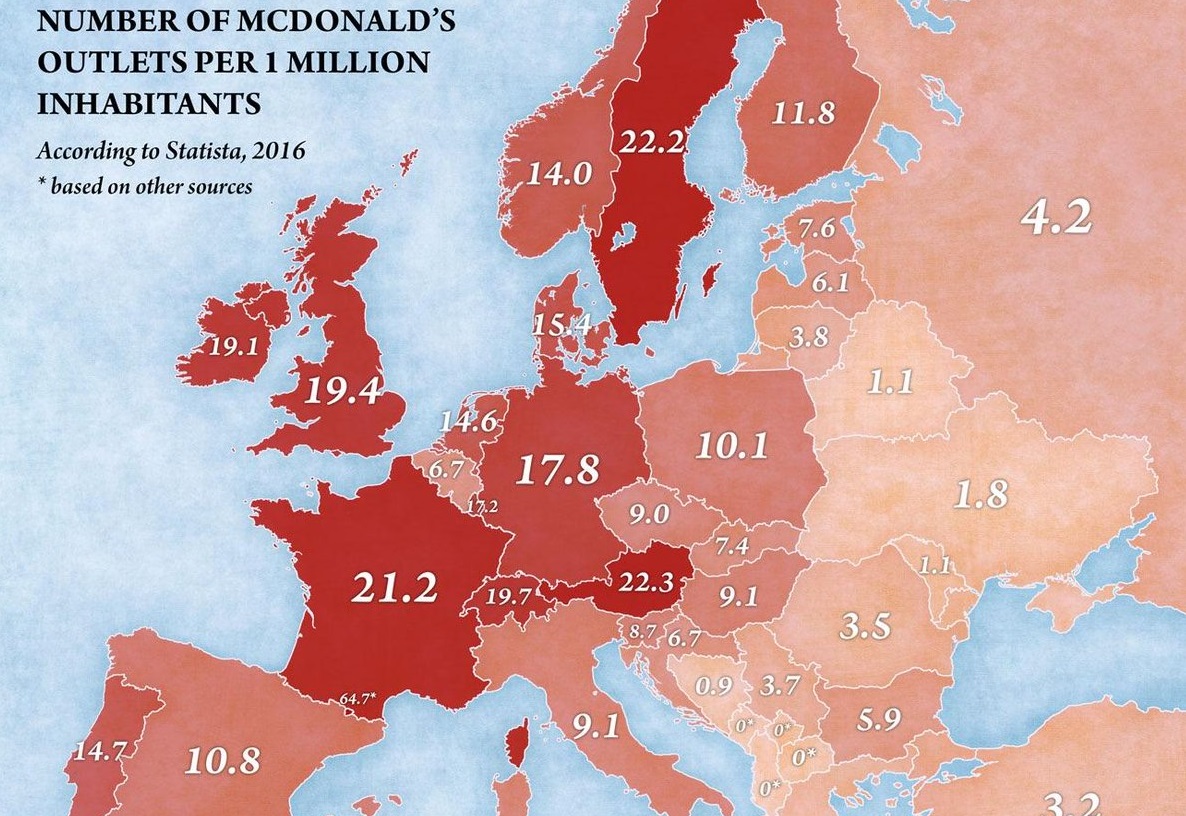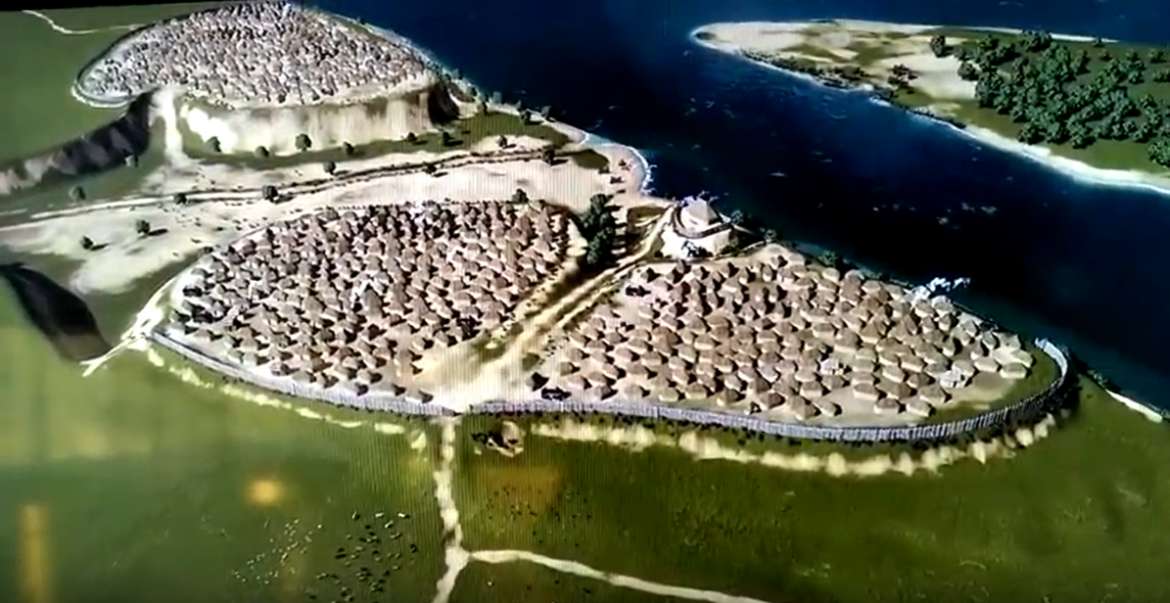Investment Rating Confirmation of Good Gov’t Policy, Says PM
ZAGREB, 18 Sept, 2021 - Prime Minister Andrej Plenković said on Saturday the affirmation of Croatia's investment rating and forecast of a 6.5% economic growth this year were a confirmation of the government's good policy, which retained Croatia's economic and financial stability during the pandemic.
"The Standard & Poor's agency has affirmed Croatia's investment rating with a stable outlook and raised the economic growth estimate in 2021 to 6.5%! This is another confirmation that Croatia has retained economic and social stability as well as jobs during the COVID-19 pandemic with the government's measures for the private sector," the prime minister tweeted.
With a successful tourism season behind and the implementation of reforms and the National Recovery and Resilience Plan thanks to European funds, Croatia is on the path of a strong and fast recovery, he wrote.
"Another priority is to go back to the policy of public debt reduction and budgetary stability. Entry to the eurozone will contribute to the further strengthening of the credit rating," he added.
For more on business, follow TCN's dedicated page.
For more about Croatia, CLICK HERE.
Lessons for Croatia: Successful Tourism by Doug Lansky at CIHT 2019
Successful tourism in an age of overtourism. Leading travel guru Doug Lansky put on a very thought-provoking show at the recent Crikvenica International Health Tourism (CIHT 2019) conference in Selce last week. With plenty of lessons for Croatia (and others) to learn.
From the very first minute after taking the stage of CIHT 2019, Doug Lansky had me hooked. One of the leading (and most engaging) speakers on the global circuit (you can check out one of his TED talks below), author of books for both Lonely Planet and Rough Guides, along with a host of other stellar tourism credentials, it became clear early on from his pouring cold water on Kvarner Regions's inclusion in Lonely Planet's top 10 regions to visit in 2020, that this was going to be quite an education.

"Yes, it is nice to have, but people don't visit destinations because of lists. I know how those lists are compiled. I used to compile them back in the office for various publications. What makes people get on a plane is something altogether different."
Before we got to what made people travel, we were treated to a very detailed and entertaining explanation of what did not make people travel. Logos, slogans, websites, sponsored social media posting, lists. And food.
Yes, food.
Lansky showed us the results of a social media which was conducted to find out if there were differences between what people clicked on when they saw a sponsored post and then - via a tracking cookie installed - what they actually spent the money on when they reached the destination. The findings were amazing. Of the four tourism activities chosen for the experiment - restaurants, supper clubs, natural attractions, and tours - restaurants had the highest click-through rate (CTR) on the ad (2.9%) and the lowest actual visit (2.7%), while natural attractions had by far the lowest CTR (1.9%) but by far the most engaged results in terms of users and dollars spent (4.8%). Take-home lesson - what grabs someone's attention while browsing on the sofa is not necessarily what will be the beneficiary of an open wallet on arrival.
So if these are not the reasons people travel, what is getting them on a plane? The answer is something obvious in an increasingly globalised world.
Something different, something unique.
Lansky took us through several examples of how abroad is looking even more like home than home is these days. Just 2 Pizza Huts in New York City, but 72 in Beijing. Just 7 KFCs in The Big Apple, but 134 in the Chinese capital. No New York Wallmarts, but three in Beijing - we have even mastered how to sell the Chinese their stuff back to them, he joked.
All this got me thinking. Croatia has never been big on international franchises but how did it compare with the rest of the EU? The results were rather interesting and offered a wonderful branding opportunity of the major EU tourism destination offering something completely different.

A country which can call itself the Non-Starbucks capital of the EU, the largest country in the EU (and let's not forget those 20 million tourists looking for a fix) with no Starbucks at all. One of the main reasons for that is the coffee - and coffee culture - is so strong.

The lowest per capita density of McDonalds in the EU outside the Baltic States. The KFC situation looked encouraging - just 7 outlets compared to 224 in Poland for example.
A great niche for Croatia to develop, perhaps?
Tourists want something unique, something different
Something different like the London Eye, for example, which was a real hit and attraction when it opened. Something truly unique. And then not so unique, as Eyes started to appear in cities as far away as Shanghai, Melbourne and Singapore.
But it is the truly unique attractions which make us travel. And the very ironic thing is that those very unique things are VERY affordable and cost almost nothing. Imagine going to Paris without visiting two of its stars, the Eiffel Tower and the Louvre - combined entrance price just 20 euro. The Taj Mahal (1 euro), the Pyramids (6 euro) the Great Wall of China (7 euro), the Hermitage in St Petersburg (8 euro), the Statue of Liberty (17 euro), Edinburgh Castle (20 euro), Macchu Picchu (39 euro). Lanksy took us through 15 world-class and very unique attractions, of which Petra in Jordan was the most expensive at 60 euro - total entrance price just 290 euro all in. In his example, a tourist coming from Vancouver to Paris to see the Louvre was spending just 0.3% of the holiday budget on the thing he came to see.
All the money is made elsewhere.
Protect and develop the unique and fabulous attractions, and they will come. And word of mouth will spread about a destination with something different and well-managed, and non-sponsored social media will market that message even louder.
Unique attractions do not need to be old monuments or places of natural beauty. He cited the food court in Brooklyn, where members had to adhere to one important rule - they could not have a similar restaurant anywhere else. If they did, they were out. And so every single restaurant is a unique gourmet experience. Plane tickets for foodies.
From the ice hotel in Sweden to the competition in Scandinavia and Finland for the best offering to enjoy the Northern Lights, to random unique hits such as a restaurant with goats on the roof, it is the unique experience which is what people are searching for.
The key of course is how to manage it well.
But we are many, and will be more. Time to put a cap on CAPitalism?
But there are more and more tourists, how to stop them coming en masse? One of the things I loved about Lansky's presentation was that he presented it in such a way as you felt that everything was so obvious and that you almost came up with the idea yourself. Simple steps, sensible suggestions, eloquently delivered. Many eyes opened.
The best example of tourism development is a theme park. If the management decides to add another ride, they also add supporting facilities - another restaurant, a ticket booth, extra toilets. The theme park growth is coordinated and takes in all considerations, and so bottlenecks are avoided. Not so with tourism.
Everyone wants to squeeze into the old town of Dubrovnik, for example, but are there enough parking spaces? Toilets? And this is before we think about the cruise ships...
There are natural caps in many, many tourism-related sectors, where only a finite number of people can come. Simple examples include airplanes and hotels. But it is rare to find destinations that put a cap on tourist numbers, as that would be anti-capitalist, right? Missing out on the chance to make more money. That money-grabbing approach highlights one of the stress lines of tourism today - the alienation of the local community. Yes, we want more tourism, said Lansky, but how many in the room wanted ten buses a day parked on the street with engines running to keep the aircon going, while tourists took over the streets, cafes and peed in the bushes. Day after day after day?
But with so many people coming, how do you reduce the numbers and reduce those queues. Can you actually put a cap on tourism numbers? Some destinations are. One Italian coastal destination Lansky mentioned was overrun by tourism and the 2.5 million visitors. They shifted to a ticketing entrance system with a maximum of 1.5 million tourists. A million less tourists, a much better destination and happier locals.
I wrote something similar a few months ago about how to deal with overtourism in Dubrovnik. With so many tour buses clogging up the roads, their guests spending little to nothing on arrival, and with the wonders of modern technology, I suggested an application which controlled access to the prime attraction, the old town. If you are spending a night in Dubrovnik, you get the download code. If you, the download costs you 100 euro, which you can spend anywhere in the old town (restaurants, entrance to the walls etc). It might not be popular for those looking for a cheap walk around, but Dubrovnik has to put a cap on things somehow, as it is really not a nice experience visiting in the summer these days. You can read more of the concept here.
Looking for a tourist attraction which manages demand very well? The Harry Potter Experience in London. Massively in demand, but only available when your selected visiting time comes around. Simple. Not only no queues, but a chance for advance spending when you book other services online.
How to make guests spend more?
I really enjoyed this section, as Lansky came out with a trove of data and ideas. And most of the conclusions were simple enough that I could make them.
People like to shop, especially if you can divorce the cash from the experience. Put it on the room bill, advance shopping, casino chips, that kind of thing. More than 30% of shopping is done after 6pm apparently, so stay open!
Toilets! Lack of good toilets often sends tourists back to the hotel to use the facilities in the hotel room. And then one of the kids lies on the bed, Dad checks his email, and before you know it, destination spending opportunities are lost.
One company which understands this is 2theloo, a high-street retail services company which keeps those spenders out in town. Check out the video above - genius.
Innovative tourism to create something from nothing
Customer service is everything. Do it well and that will often be the highlight of the holiday. Do it exceptionally and innovatively, and you can transform your business. Lansky gave a great example of a hotel which was number 62 in the destination's TripAdvisor ranking. They decided to convert 4 ground-floor rooms to be pet-friendly. In order to add a little friendliness, they had a gimmick of email the pet to say that its bowl and cushions were ready, ending with a greeting like Wuff, Wuff. To the hotel's astonishment, the arriving canine guests emailed their own wuffing messages back. To such an extent that all were great friends by the time of arrival. The hotel is now completely pet-friendly in all rooms. And number one on TripAdvisor.
Another brilliant idea which cost nothing was the Overstay Hotel. Guests can stay as look as the room is not booked, so if you come for a night and there is no booking for the rest of the week, you get a free stay. While this does not actually cost the hotel very much, in addition to the marketing benefit, guests are likely to spend on ancillary services such as bar and restaurant, much more than an empty room could.
Not all the money stays in the destination
An obvious point, perhaps, but one which is often overlooked. 15% to Booking.com, 10% franchise fee to corporate head office, 4% for credit cards etc - and so much more, but Lansky also gave a great example of how tourism money seemingly comes into a community, when it actually doesn't. And he gave a great example, again.
A guy comes to a hotel and pays for the room in cash. 100 euro. The owner is grateful as he is broke and immediately gives the 100 euro to the laundry guy who has been doing the service on credit. The credit guy goes to pay his vetinary bill, and the vet then settles his outstanding bar bill. The barman pays the debt to the accountant, who immediately runs to the hotel to settle last night's hotel bill when his parents came to stay. Just as he does so, the original guests comes down and says he has changed his mind and so takes his money back and leaves.
The other money aspect which is rarely mentioned (and I have NEVER heard it mentioned in Croatia) is the cost of tourism. 20 million tourists generate 12 billion dollars or whatever the number will be this year, but has anyone ever heard a number on the utility or cleanup costs on the explosion of mass tourism. Or the environmental coast of the gradual erosion of the idyll that was the Adriatic coast 50 years ago?
So what are Croatia's top 10 unique things to see that might get people on that plane?
To conclude - as I have gone on longer than I intended - close your eyes, strip away the tourists and the mass tourists. What are the top 10 things in Croatia with that unique WOW factor or the potential WOW factor? Something that you can not or can hardly find anywhere else?
My list I am sure will be different to yours, so post yours in the comments - it could be a fun discussion. But one thing that immediately strikes me about my list is that almost all - if not all - of the 10 are either threatened by overtourism, or are hardly touched by tourism at all. The lesson being, if young Lansky is right, that Croatia and his Starbucks-free brand might be better served to have a complete rethink of how to make those unique attractions which cost almost nothing to see so amazing that all the money is spent around them.
And to consider, perhaps, that 1000 tourists a day spending 1000 euro a day is a lot better than 100,000 spending 10 euro a day...
My top 10, in no particular order

1. Dubrovnik Walls
2. Diocletian's Palace
3. Plitvice Lakes
4. Vucedol (in photo above - and an intro for those who have never heard of it)
5. Blaca and Dragon's Cave
6. Blue Cave
7. Smiljan, birthplace of Nikola Tesla (but needs to be developed - but what an opportunity with 21 million electric cars on Europe's roads by 2030)
8. Pula Arena
9. Sibenik stone fortresses and cathedral
10. Hvar Town and the Pakleni Islands
Imagine if all those where developed with the idea of preserving and keeping special the unique attractions, and then generating the cash all around.
To learn more about Doug Lansky and successful tourism, visit his official website.
For more on tourism in Croatia, follow the dedicated TCN travel section.


